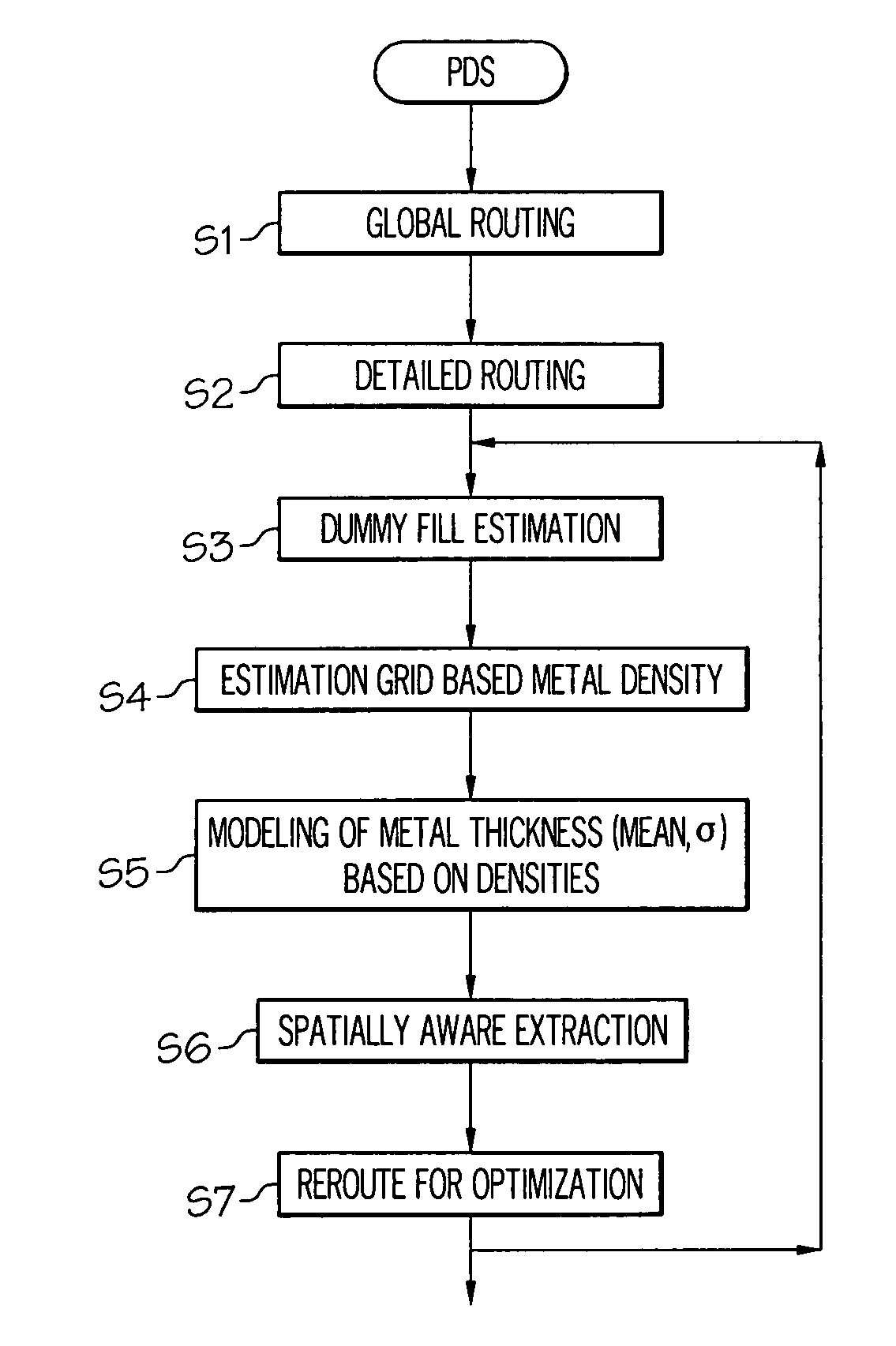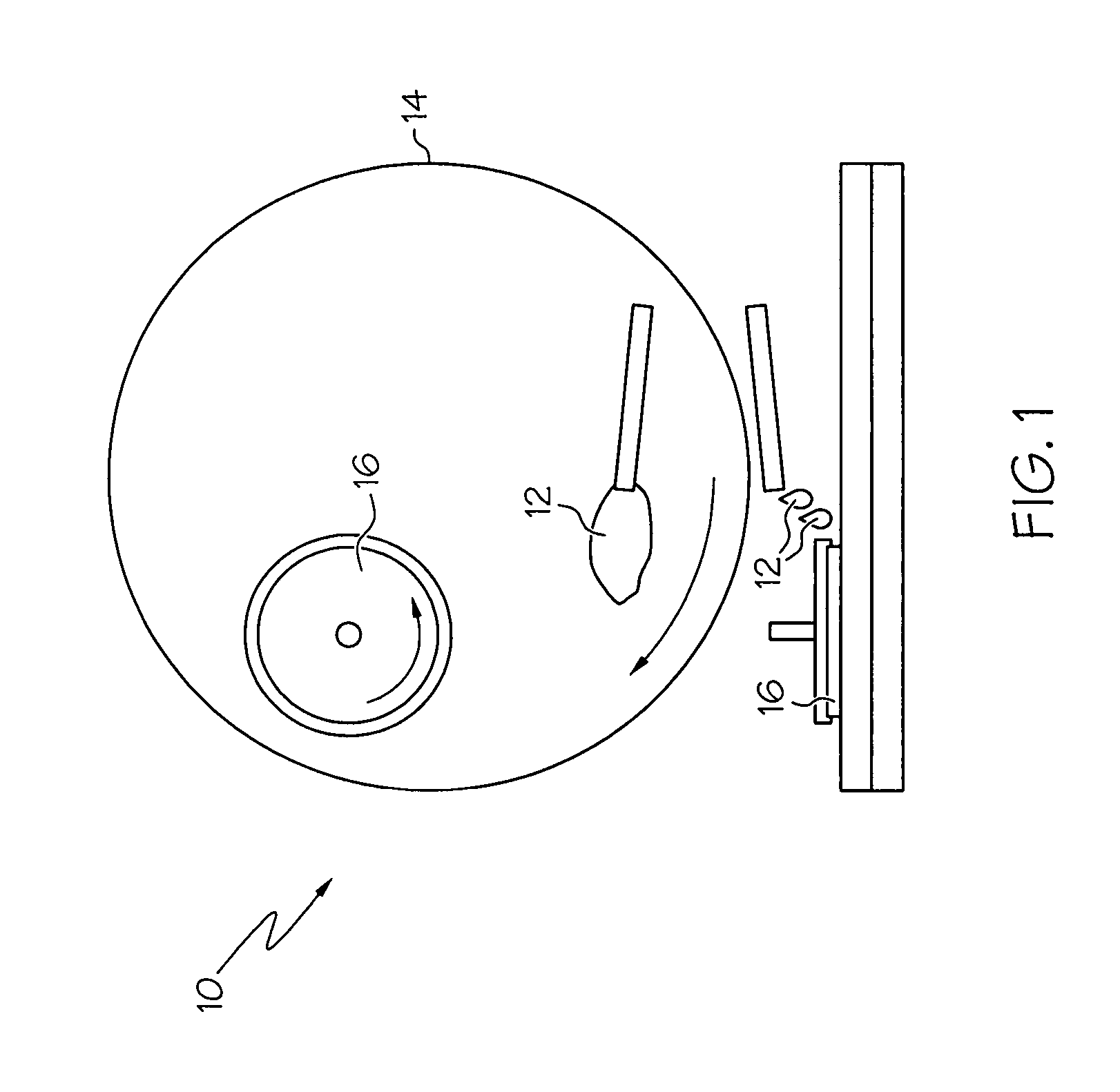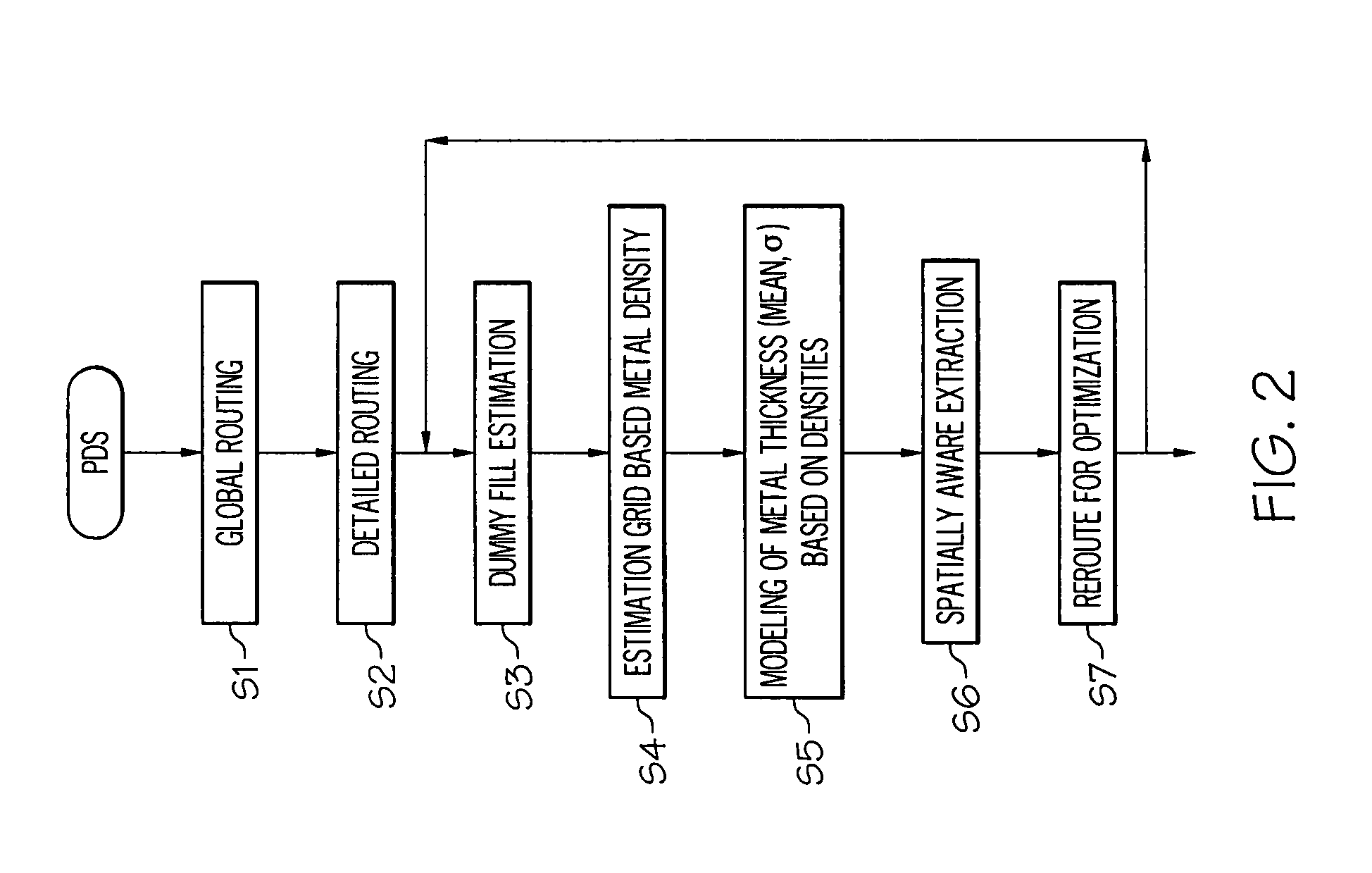Design stage mitigation of interconnect variability
a technology of interconnect variability and design stage, applied in the direction of program control, total factory control, instruments, etc., can solve the problems of affecting interconnect signal delay and crosstalk, affecting the design range of wire thickness of these nets, and regions in layout cannot reach the required metal density, so as to mitigate the effects of interconnect variability and mitigate the effect of interconnect variability
- Summary
- Abstract
- Description
- Claims
- Application Information
AI Technical Summary
Benefits of technology
Problems solved by technology
Method used
Image
Examples
Embodiment Construction
[0028]For convenience purposes, the Detailed Description of the Invention will have the following sections:
[0029]I. General Description
[0030]II. Illustrative Embodiment
[0031]III. Computerized Implementation
I. General Description
[0032]As indicated above, the design of chips is often adversely affected by variability in the back end of the line (BEOL). That is, mismatching commonly occurs between the design and manufacturing stages of the chip. One manufacturing stage technique where such variability is typically caused is Chemical-Mechanical Polishing (CMP). Referring to FIG. 1, a diagram 10 of a known CMP process is shown. As depicted, a slurry 12 is distributed at various positions along a polishing pad 14. As force is applied against a chip or wafer 16, the rotational motion of polishing pad 14 causes chip 16 to be polished or planarized. While CMP can be necessary to establish reliable multilevel interconnects, CMP needs to be closely controlled to avoid the aforementioned advers...
PUM
 Login to View More
Login to View More Abstract
Description
Claims
Application Information
 Login to View More
Login to View More - R&D
- Intellectual Property
- Life Sciences
- Materials
- Tech Scout
- Unparalleled Data Quality
- Higher Quality Content
- 60% Fewer Hallucinations
Browse by: Latest US Patents, China's latest patents, Technical Efficacy Thesaurus, Application Domain, Technology Topic, Popular Technical Reports.
© 2025 PatSnap. All rights reserved.Legal|Privacy policy|Modern Slavery Act Transparency Statement|Sitemap|About US| Contact US: help@patsnap.com



